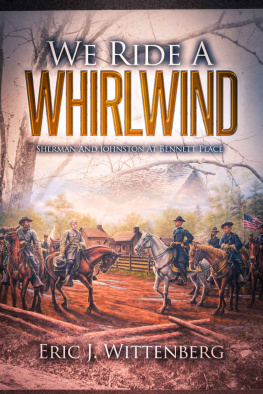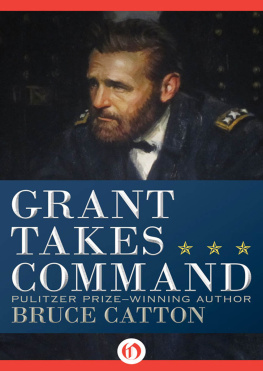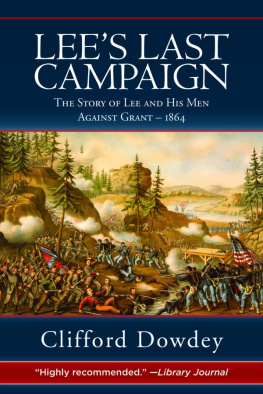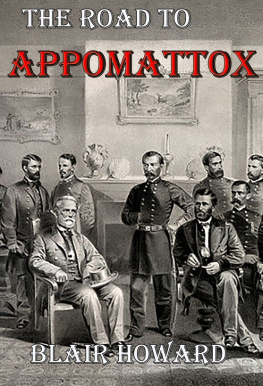
ALSO BY JOSEPH WHEELAN
Bloody Spring: Forty Days That Sealed the Confederacys Fate
Terrible Swift Sword: The Life of General Philip H. Sheridan
Libby Prison Breakout: The Daring Escape from the Notorious Civil War Prison
Mr. Adamss Last Crusade: John Quincy Adamss Extraordinary Post-Presidential Life in Congress
Invading Mexico: Americas Continental Dream and the Mexican War, 18461848
Jeffersons Vendetta: The Pursuit of Aaron Burr and the Judiciary
Jeffersons War: Americas First War on Terror, 18011805


Copyright 2015 by Joseph Wheelan
All rights reserved. No part of this publication may be reproduced, stored in a retrieval system, or transmitted, in any form or by any means, electronic, mechanical, photocopying, recording, or otherwise, without the prior written permission of the publisher. Printed in the United States of America. For information, address Da Capo Press, 44 Farnsworth Street, Third Floor, Boston, MA 02210.
Published by Da Capo Press
A Member of the Perseus Books Group
www.dacapopress.com
First Da Capo Press edition 2015
Library of Congress Cataloging-in-Publication Data is available for this book.
ISBN 978-0-306-82361-9 (e-book)
Da Capo Press books are available at special discounts for bulk purchases in the U.S. by corporations, institutions, and other organizations. For more information, please contact the Special Markets Department at the Perseus Books Group, 2300 Chestnut Street, Suite 200, Philadelphia, PA 19103, or call (800) 810-4145, ext. 5000, or e-mail .
DESIGN BY JANE RAESE
Set in 12-point Bulmer
1 3 5 7 9 10 8 6 4 2
TO PAT, SARAH, AND ANN,
whose intelligence, drive, and sense of humor continue to inspire me
CONTENTS
Illustrations follow page 166
I am indebted to the University of North Carolinas libraries, where I received help, guidance, and excellent suggestions as I was researching this book.
My hunt for source material led to the thousands of volumes of published journals, diaries, letters, and unit histories that fill several aisles of Davis Library and UNCs Wilson Library. Three of Wilsons special collections, a jackpot of Civil War primary source material, were particularly useful: the North Carolina Collection, Southern Historical Collection, and Rare Book Collection.
I am grateful to the full-time and student librarians and to the archivists at those Chapel Hill venues for their patience with a researchers endless questions, and for their eagerness to assist.
The Library of Congress provided photographs and illustrations for this book, as well as good background information. My thanks go out to the librarians who aided my search for this material.
I am grateful to the Library of Virginia and its staff for pointing me to sources that helped me to write this book.
I thank Bob Pigeon, executive editor of Da Capo Press, for his support over the years. Few editors anywhere are as knowledgeable as Bob about American history.
My agent, Roger Williams of New England Publishing Associates, has been a steady source of encouragement and advice, for which I am appreciative.
Finally, my wife Pat has been an anchor as always.
Had the army made a show of surrounding [Fort Fisher], it would have been ours, but nothing of the kind was done.... There never was a fort that invited soldiers to walk in and take possession more plainly than Fort Fisher.
ADMIRAL DAVID PORTER, AFTER FAILED FIRST ATTEMPT TO CAPTURE FORT FISHER
January 12, 1865
FORT FISHER, NORTH CAROLINA
The Yankee squadron had returned. As dread tidings do, the news swept through the Confederate garrison until everyone, from its twenty-nine-year-old commander, Colonel William Lamb, to the lowliest private, was scanning the Atlantic waters for enemy ships.
Before long the Union armada could be seen hovering off Cape Fear; it was the same fleet that had tried, without success, to capture Fort Fisher on Christmas Day. About sixty steam-propelled and sailing ships covered the blue waters to the eastern horizonfrigates, sloops, gunboats, tugs, troop transports, brigs, and barks.
The enemys reappearance was not a surprise; Lamb had learned on January 8 that Union troop transports were rendezvousing near Beaufort, North Carolina, with Admiral David Porters North Atlantic Blockading Squadron.
When the Yankee armada glided into position in the waters opposite his fort, Lamb requested reinforcements for his eight hundred men from the departmental commander, General Braxton Bragg. Bragg recognized that the enemy fleets return meant that it had the means and the will for a desperate effort.
Confederate President Jefferson Davis had sent Bragg to the Carolinas the previous fall as a troubleshooter. In November Bragg took charge in Wilmington when an attack on Fort Fisher began to appear imminent. He was a native North Carolinian and West Point graduate who had risen to prominence as commander of the Army of Tennessee following General Albert Sidney Johnstons death at Shiloh. Braggs subsequent battle record was spotty: defeats at Perryville and Stones River followed by success at Chickamauga. After that battle Bragg failed to press his advantage and drive the Union Army out of Tennessee and instead laid siege to Chattanooga. A frustrated General Nathan Bedford Forrest grumbled to his fellow officers, What does he fight battles for? Grant drove Bragg from Tennessee in November 1863, and his subordinates clamored for his removal. Davis, who thought highly of Bragg, reluctantly transferred him from Tennessee to Richmond to become Daviss top military adviser.
The day after the appearance of Porters armada, small boats began landing Union infantrymen from the Army of the James a few miles north of the fort. By 3 p.m. eight thousand bluecoats were ashore, foreclosing the possibility of Rebel reinforcements from Sugar Loaf, a Rebel position seven miles from the fort. At Sugar Loaf was General Robert Hokes infantry division from the Army of Northern Virginia, sent by Robert E. Lee in December to North Carolina to help keep open the Confederacys last major port, Wilmington.

The fort that William Lamb built was essential to both Wilmingtons and the Confederacys survival. Lee had told Lamb that Fort Fisher must absolutely be held or else he would be unable to feed and provision his army. For six months Lees men had successfully defended Petersburg and Richmond against the powerful Army of the Potomac. But without supplies Lees men could not hold Virginias last two strongholds, and the Confederacys downfall would be inevitable.
As it was, the Union Armys stranglehold on Virginia had steadily tightened throughout 1864, while the effectiveness of Lees army had just as steadily declined due to inadequate food and clothing. In August 1864 Admiral David Farragut had seized control of Mobile Bay, eliminating the port of Mobile as a destination for blockade-runners. That fall the destruction inflicted by General William Sherman on Georgias farms and by General Phil Sheridan on Virginias breadbasket, the Shenandoah Valley, had virtually halted food shipments from those areas. The Confederacy now more than ever depended for its sustenance on the supplies leaking through the Union naval blockade outside Charleston, South Carolina, and the richer stream entering the Cape Fear River under Fort Fishers forty-eight guns.
Next page














